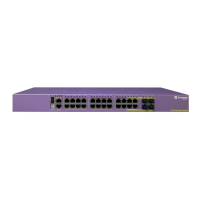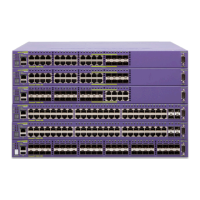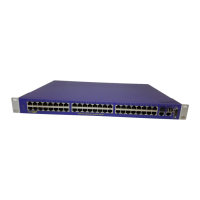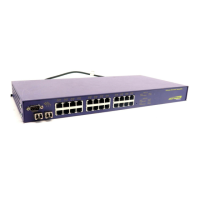Chapter 4: Site Preparation
Summit Family Switches Hardware Installation Guide
182
Installing Cable
When you connect cable to your network equipment:
● Examine cable for cuts, bends, and nicks.
● Support cable using a cable manager that is mounted above connectors to avoid unnecessary weight
on the cable bundles.
● Use cable managers to route cable bundles to the left and right of the network equipment to
maximize accessibility to the connectors.
● Provide enough slack, approximately 2 to 3 inches (5.08 to 7.62 cm), to provide proper strain relief as
shown in Figure 137 on page 183.
● Bundle cable using hook-and-loop straps to avoid injuring cables.
● If you build your own cable, be sure that connectors are properly crimped.
● When installing a patch panel using twisted pair wiring, untwist no more than 1 inch (2.54 cm) of
the cable to avoid radio frequency (RF) interference.
● Discharge the RJ-45 Ethernet cable before plugging it into a port on the switch.
CAUTION
Unshielded twisted pair (UTP) cable can build up ESD charges when being pulled into a new
installation. Before connecting any category 5 UTP cable to the switch, discharge ESD from the cable by
plugging the RJ-45 connector into a LAN static discharge device or use an equivalent method.
● Use plenum-rated cable when it is necessary for safety and fire rating requirements. Consult your
local building codes to determine when it is appropriate to use plenum-rated cable, or refer to IEC
standard 850.
● Keep all ports and connectors free of dust.

